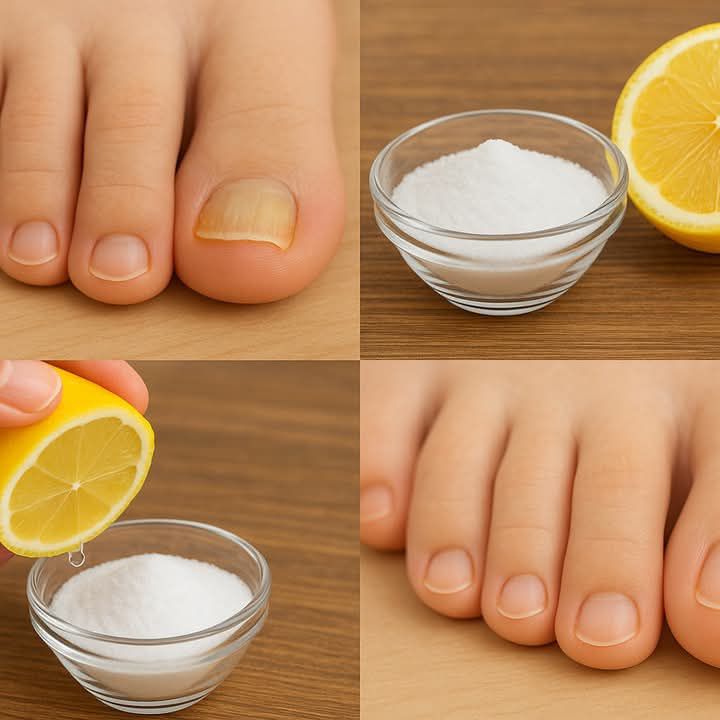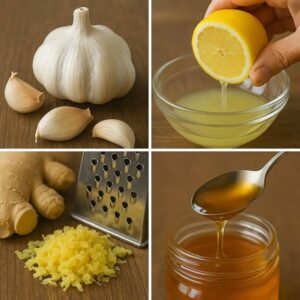Nail Fungus Removal: 100% Natural Treatment For Toenail Fungus
Are you tired of hiding your toes due to embarrassing nail fungus? You’re not alone! Many people search for effective and natural ways to tackle this common problem. Let’s explore some proven 100% natural treatments for toenail fungus that you can try at home.
Understanding Nail Fungus
Nail fungus, also known as onychomycosis, is a fungal infection that affects the nails. It usually starts as a white or yellow spot under the tip of your toenail. As it spreads, it can cause the nail to discolor, thicken, and even crumble. It’s not just unsightly; it can also be painful. Understanding the causes can help in choosing the right natural treatment.
 A close-up shot of a healthy toenail versus a toenail affected by fungus, highlighting the discoloration and texture differences.
A close-up shot of a healthy toenail versus a toenail affected by fungus, highlighting the discoloration and texture differences.
What Causes Toenail Fungus?
Several factors can contribute to the development of toenail fungus:
- Damp Environments: Fungi thrive in moist places like public showers, swimming pools, and sweaty shoes.
- Poor Hygiene: Not keeping your feet clean and dry can create an ideal breeding ground for fungi.
- Injuries: Nail injuries can create openings for fungi to enter.
- Weakened Immune System: A compromised immune system can make you more susceptible to fungal infections.
 A collage showcasing potential causes of toenail fungus: a swimming pool, sweaty shoes, and a foot with a minor injury.
A collage showcasing potential causes of toenail fungus: a swimming pool, sweaty shoes, and a foot with a minor injury.
Natural Treatments for Toenail Fungus
Many prescription and over-the-counter treatments are available for toenail fungus, but some people prefer natural alternatives. Here are some of the most effective 100% natural approaches:
 A visually appealing display of various natural remedies like tea tree oil, apple cider vinegar, and baking soda.
A visually appealing display of various natural remedies like tea tree oil, apple cider vinegar, and baking soda.
Tea Tree Oil
Tea tree oil is a powerful essential oil known for its antifungal and antiseptic properties. Studies have shown it to be effective in treating various fungal infections, including toenail fungus. It is considered one of the most popular and well-researched natural remedies.
How to Use:
- Clean and dry the affected toenail thoroughly.
- Apply a few drops of pure tea tree oil directly to the nail.
- Gently massage the oil into the nail and surrounding skin.
- Let it absorb for at least 10-15 minutes.
- Repeat twice daily for several months.
 A person applying tea tree oil to their toenail with a cotton swab.
A person applying tea tree oil to their toenail with a cotton swab.
Apple Cider Vinegar (ACV) Soak
Apple cider vinegar is another popular home remedy for toenail fungus. Its acidic properties can help inhibit the growth of fungi. While not as potent as some other treatments, it’s a gentle option that can be used regularly.
How to Use:
- Mix equal parts apple cider vinegar and warm water in a basin.
- Soak your affected foot in the solution for 15-20 minutes daily.
- Dry your foot thoroughly after soaking.
 A foot soaking in a basin of apple cider vinegar and water.
A foot soaking in a basin of apple cider vinegar and water.
Baking Soda
Baking soda can help neutralize the environment on your feet, making it less hospitable for fungus to thrive. It’s a cost-effective and readily available option for maintaining foot hygiene.
How to Use:
- Create a paste by mixing baking soda with a small amount of water.
- Apply the paste to the affected nail and surrounding skin.
- Let it dry for 10-15 minutes.
- Rinse with water and dry thoroughly.
Alternatively, you can add baking soda to your socks or shoes to absorb moisture.
 A small bowl of baking soda paste being applied to a toenail.
A small bowl of baking soda paste being applied to a toenail.
Garlic
Garlic possesses potent antifungal and antimicrobial properties thanks to its active compound, allicin. Using garlic, either topically or through dietary consumption, may help combat the fungal infection from within and on the surface.
How to Use:
- Crush a few cloves of garlic to form a paste.
- Apply the garlic paste to the affected nail.
- Cover with a bandage and leave it on for about 30 minutes.
- Rinse thoroughly and dry the area well. Repeat daily.
Alternatively, consider increasing your garlic intake through diet.
 A close-up image showing crushed garlic being prepared for topical application.
A close-up image showing crushed garlic being prepared for topical application.
Epsom Salt Soak
Epsom salt can help draw out moisture and create an environment that’s less favorable for fungal growth. It also has soothing properties that can ease any discomfort associated with the infection.
How to Use:
- Dissolve Epsom salt in warm water.
- Soak the affected foot in the mixture for 20 minutes.
- Dry the foot thoroughly after soaking.
 A foot soaking in a basin of Epsom salt water.
A foot soaking in a basin of Epsom salt water.
Prevention is Key
While treating toenail fungus is important, preventing it from recurring is just as vital. Here are some simple tips to help keep your feet healthy and fungus-free:
- Keep your feet clean and dry: Wash your feet daily with soap and water, and dry them thoroughly, especially between the toes.
- Wear breathable shoes and socks: Choose shoes made of breathable materials like leather or canvas, and wear moisture-wicking socks.
- Change socks regularly: Change your socks at least once a day, or more often if your feet sweat excessively.
- Avoid walking barefoot in public places: Wear sandals or flip-flops in public showers, locker rooms, and swimming pools.
- Disinfect your nail clippers: Clean and disinfect your nail clippers and other foot care tools regularly.
 A collage illustrating preventive measures: clean feet, breathable shoes, and disinfecting nail clippers.
A collage illustrating preventive measures: clean feet, breathable shoes, and disinfecting nail clippers.
Conclusion
Dealing with toenail fungus can be frustrating, but these 100% natural treatments offer a promising approach to reclaiming healthy, happy feet. Remember that consistency is key, and it may take several weeks or even months to see noticeable improvements. Combine these natural remedies with good foot hygiene practices for the best results. If your condition doesn’t improve or worsens, consult a healthcare professional for further guidance. Now, take the first step towards healthier nails, and say goodbye to hiding your toes!














Post Comment